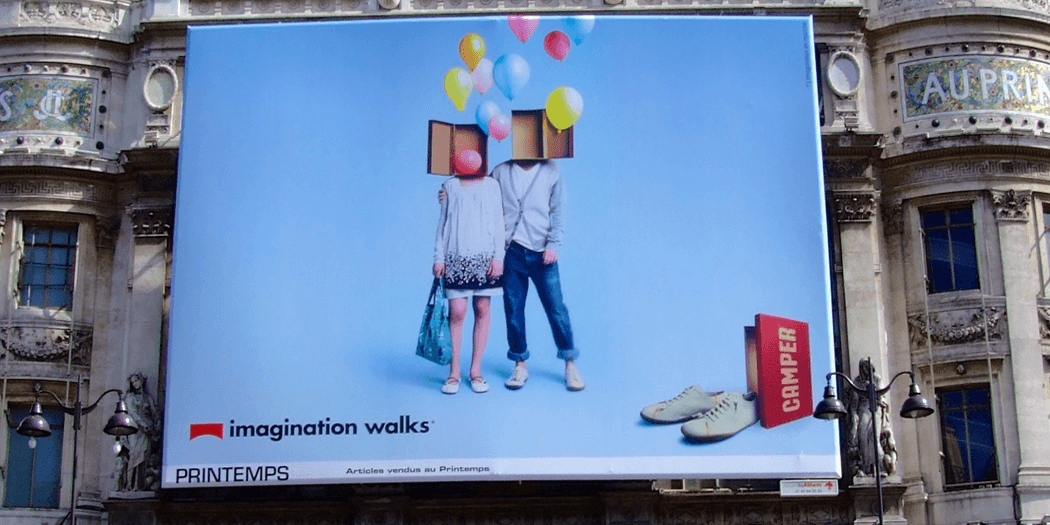How to Get the Most Out of Your Facebook Ads (3 Key Tips)
When you run a small business, you’ll want to make sure every dollar you spend on advertising pulls its weight. Social media ad sales are booming, for example, but only 27% of people say that they feel ads they’re shown online are “often relevant.”
To get the best return for what you spend on Facebook ads, it’s important to understand who your audience is and what they’re interested in. For example, if you’re selling lawnmowers, your products may appeal more to a 35-year-old man in a suburban area than to an 18-year-old girl in New York City. Fortunately, there are a wide range of tools available to filter and target who sees your ads.
In this guide, we’ll go over how to make the most of your Facebook ad targeting, and include a few tips for writing effective advertisements for the platform. Let’s get started!
Why You Should Consider Using Facebook Ads
New businesses often need to make a strong impact on consumers with limited marketing funds. If that’s the situation you find yourself in, Facebook ads are an excellent way to make the most of a small advertising budget. For just a few dollars, you can widely expand your reach, thanks to the platform’s massive popularity.
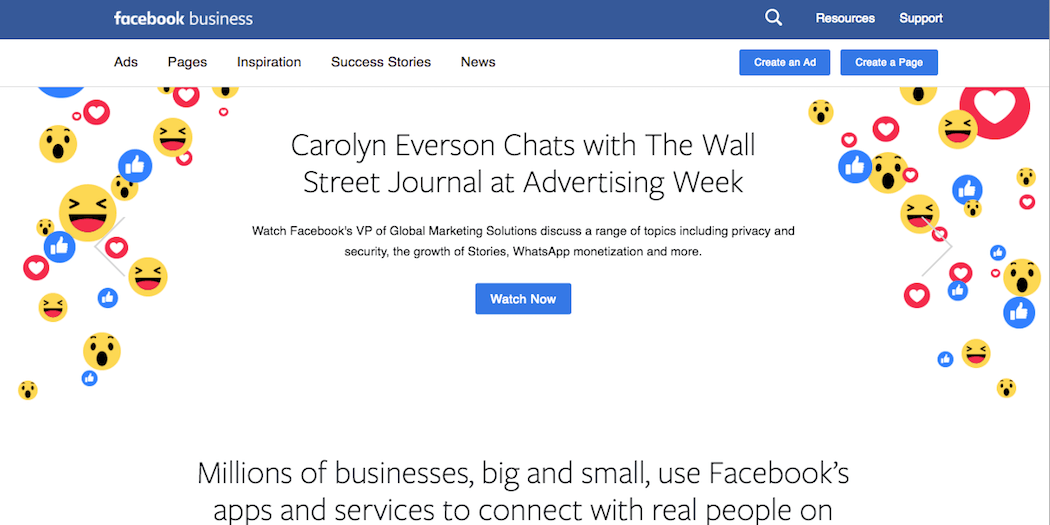
What’s more, Facebook provides a huge range of targeting options. You can have ads appear to specific users based on location, age, gender, and even interests. There are also powerful analytic tools, so you can track how effective your ads are. This makes it easier to perform A/B testing and refine your advertising strategies.
How to Get the Most Out of Your Facebook Ads (3 Key Tips)
To reap the full benefits of your Facebook ads, however, there are a few steps you’ll want to take. In the following sections, we’ll go over three simple tips to help you use Facebook ads effectively.
1. Write Effective Ads
This tip may seem obvious at first, but we’re not talking about quality in a general sense. Instead, it’s important to tailor your ads to Facebook specifically.
For example, images are everything when it comes to Facebook marketing. You’ll want to create something that’s visually attention-grabbing, featuring one or more strong images or videos. It’s also smart to place a key phrase or logo within the main image, in order to associate it with your brand.
As for your ad’s text, we recommend keeping it to a short, punchy sentence or two with a strong Call To Action (CTA):
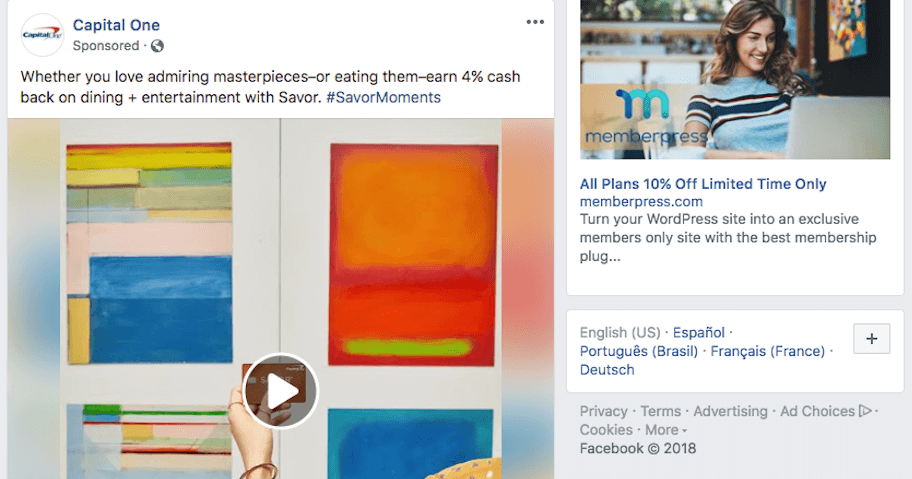
Facebook users see a lot of content, and tend to move past each item quickly. Therefore, anything you can do to keep your ads as engaging as possible will help them get noticed.
2. Define Your Target Audience
As we mentioned earlier, Facebook’s ad platform enables sophisticated audience filtering. This means you’ll want to think about what type of people you’re trying to attract.
For example, if your online store sells women’s clothing aimed at professionals, you might want to limit your audience to women between the ages of 27 and 40 in the United States and Canada. On the other hand, if you run a restaurant with a physical location, you may want to target a wider age range but only focus on potential audience members who live within 10 miles of your city.
Ad targeting can be an excellent way to make the right people aware of whatever you’re promoting. You can even have multiple saved audiences. That way, if your company caters to more than one demographic, you can easily switch back and forth between them based on the products or services you’re currently promoting.
You can easily define an audience via the Ads Manager in Facebook. First, open up the target audience panel by visiting Facebook Business and clicking on Create an Ad. In the left sidebar, you can choose Audience under the Ad Set category:
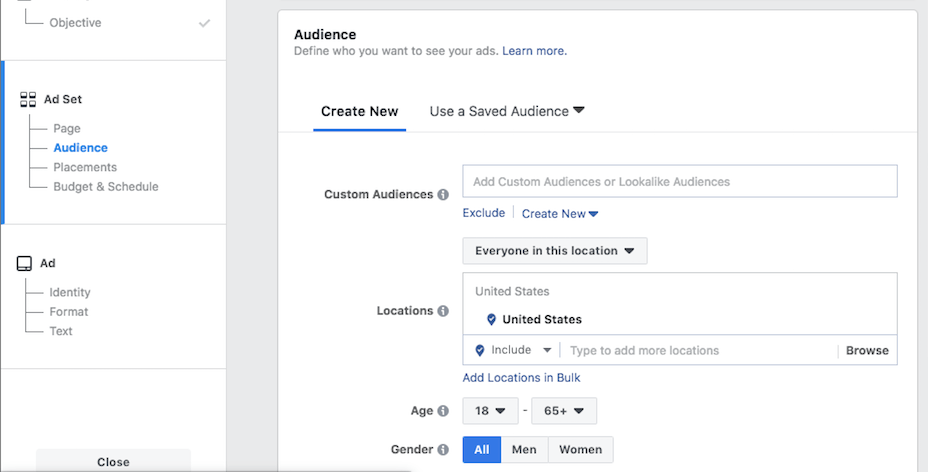
You’ll then see a set of options that enable you to choose your location, such as a specific zip code or country. In addition to location, you can filter your demographic by age, gender, language spoken, and even terms such as “emerging markets”.
You can narrow your audience further by specifying types of behavior, such as whether they’ve ‘liked’ a page with similar content to yours. Then you can choose to include or exclude people based on that behavior. So if you’re promoting a new vegan burger, you might want to include fans of PETA’s page but exclude people who list “bacon” as an interest.
There’s also an option to include or exclude your page’s ‘extended’ connections – friends of people who already like your page. You might want to target connections of your fans to take advantage of social influence – most people are more likely to buy products that they think their friends already use.
3. Use the Custom Audience Tool
One of the problems with traditional advertising is that you usually can’t create messaging that assumes its audience is familiar with your business. However, Facebook’s Custom Audience tool enables you to find people who already know your business, and advertise directly to them.
Even better, once you have your custom audience set up, you can choose to exclude them from ads as well. So if you want to aim a message at entirely new customers, you can. This allows for the possibility of segmented marketing. If you have the budget for multiple ads, you can design a more explanatory option for people who are just now discovering your business, and a second ad for those who are already fans.
You can build a custom audience from your own mailing list, based on people who have engaged with your content on Facebook, or via the Facebook pixel:
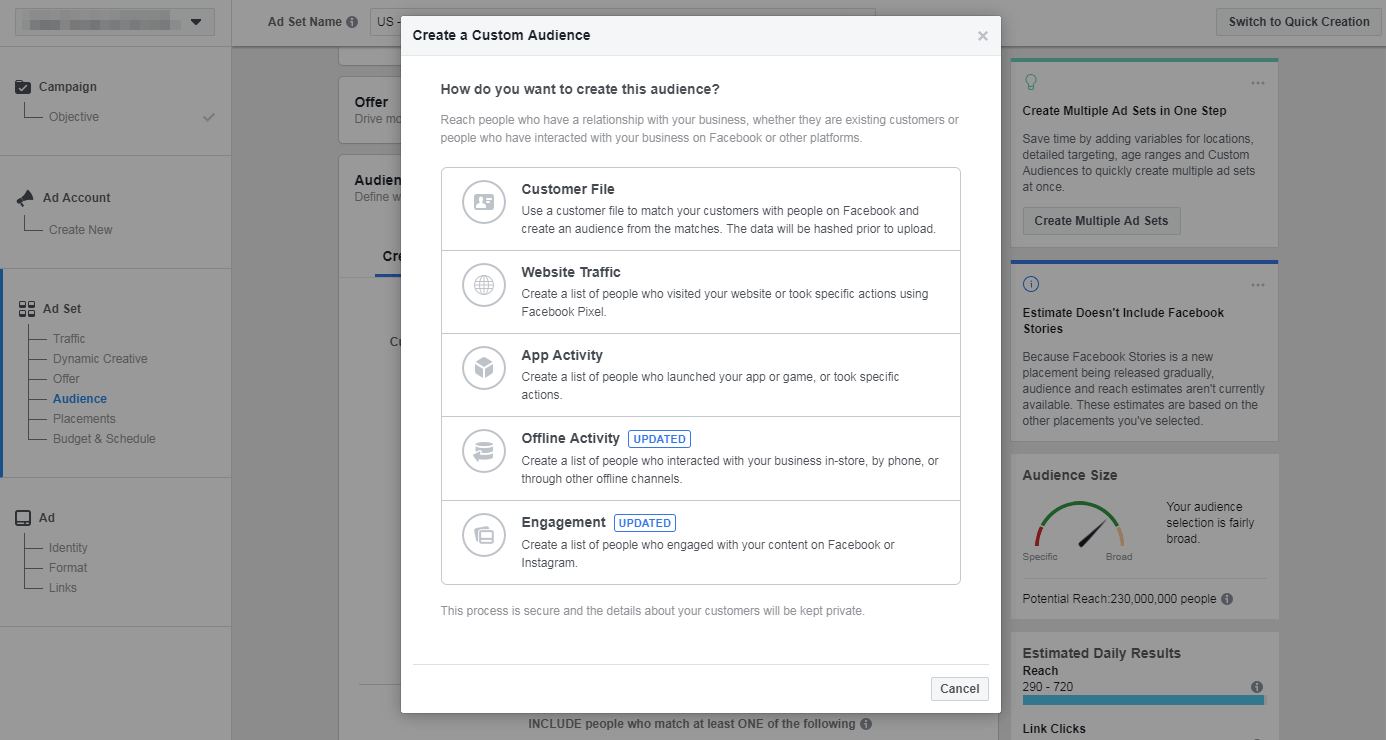
All of these options are found within your Ads Manager in Facebook. No matter what method you use, this is an effective way to target the right people with the right messages.
Conclusion
Facebook ads can be a smart way to make the most of a small advertising budget. You can reach highly specific audiences for as little as a few dollars per ad. However, it’s important to maximize your returns by creating and targeting your ads carefully.
Three ways you can target your Facebook ads include:
- Writing effective ads: Make sure your ads contain a strong, attention-grabbing image or video and a brief CTA.
- Defining your target audience: Control who sees your ads using demographics, interests, and behaviors.
- Using the Custom Audience tool: Identify those who are already fans of your business, and target them with special messaging.
Image credit: Pexels.



